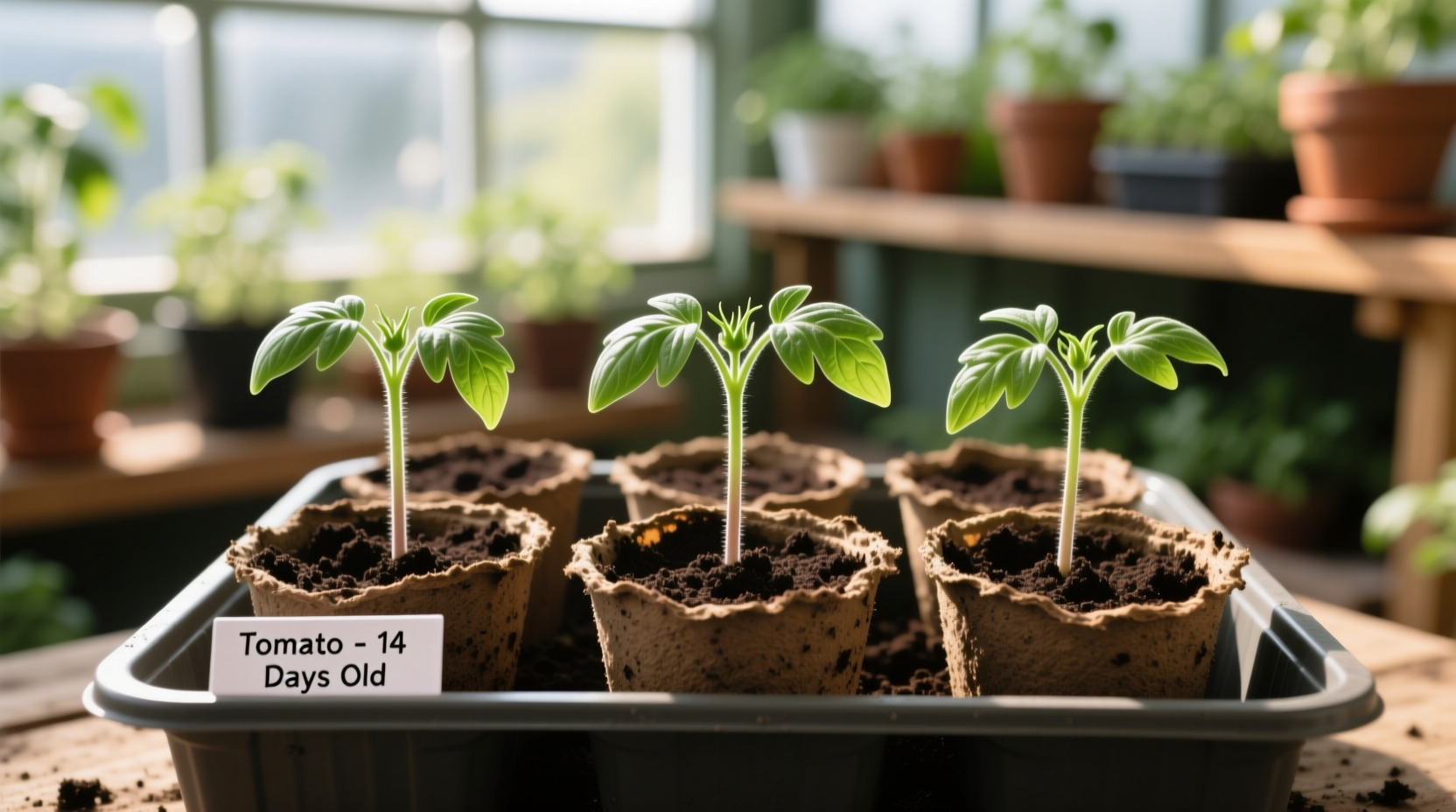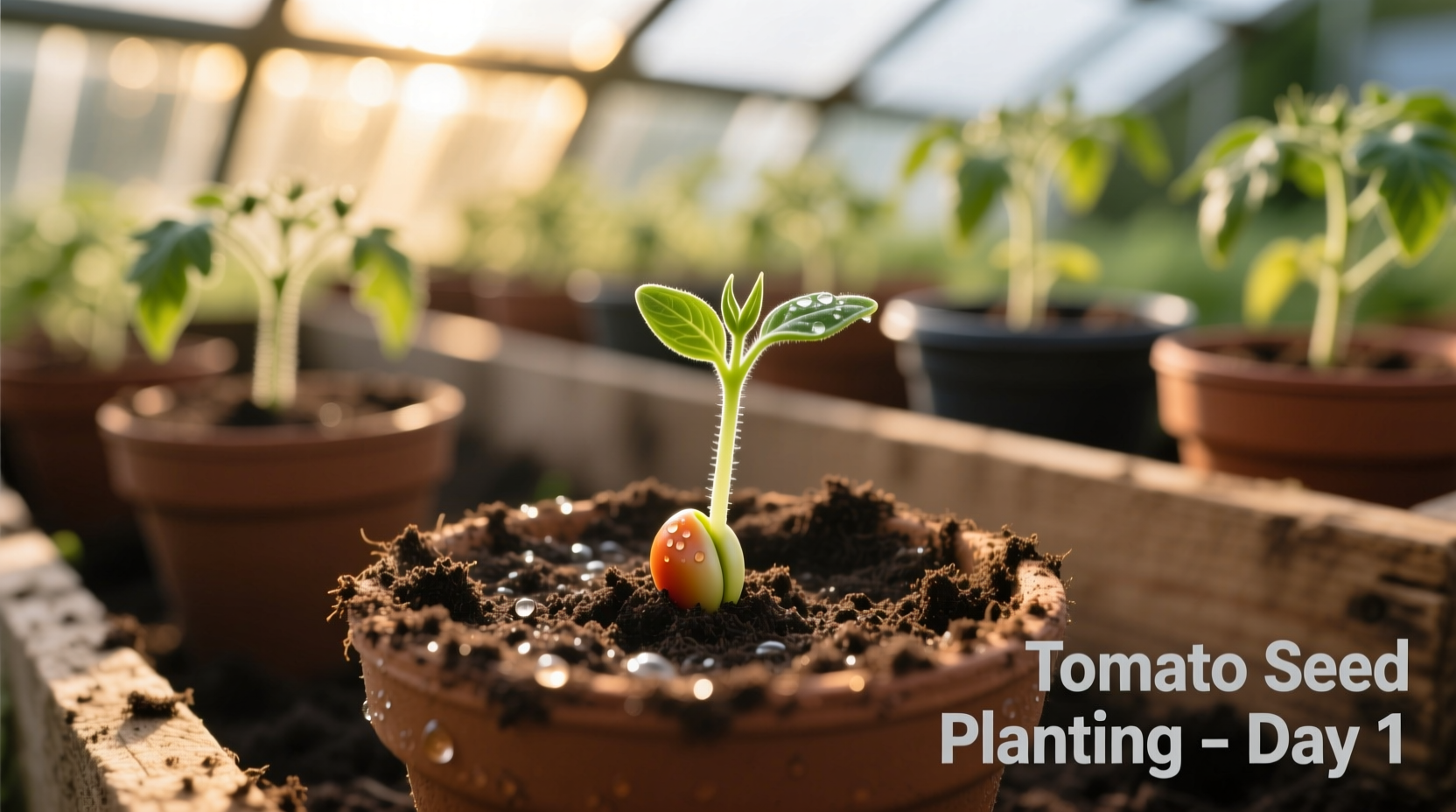Why Timing Matters: The Science Behind Successful Tomato Seed Planting
Getting the timing right for tomato seed planting makes the difference between robust plants and disappointing results. Tomatoes are warm-season crops that require specific temperature conditions to thrive. According to the USDA Plant Hardiness Zone Map, you should start seeds indoors 6-8 weeks before your area's last expected spring frost date. This timing allows seedlings to develop sufficiently before transplanting outdoors when soil temperatures consistently reach at least 60°F (15°C).
| USDA Zone | Last Frost Date | Seed Starting Date | Transplant Date |
|---|---|---|---|
| 3-4 | May 15-30 | March 20-April 5 | June 1-15 |
| 5-6 | April 15-30 | February 20-March 5 | May 1-15 |
| 7-8 | March 15-30 | January 20-February 5 | April 1-15 |
| 9-10 | February 15-28 | December 20-January 5 | March 1-15 |
Your Step-by-Step Tomato Seed Planting Process
Preparing Your Seed Starting Environment
Before handling tomato seeds, prepare an optimal environment for germination. Cornell University's College of Agriculture and Life Sciences recommends using a sterile seed starting mix rather than garden soil, which can contain pathogens and may not provide proper drainage. Fill clean containers with drainage holes, leaving 1/2 inch of space at the top. Moisten the mix thoroughly before planting—damp but not soggy conditions create the perfect foundation for seed germination.
Planting Your Tomato Seeds Correctly
Place 2-3 seeds per container at a depth of 1/4 inch. Research from the University of California Agriculture and Natural Resources shows that planting too deep is a common mistake that significantly reduces germination rates. Cover seeds lightly with mix and mist with water to ensure good soil contact. Label each container with the variety and planting date—this simple step prevents confusion later when multiple varieties are growing.

Creating Ideal Germination Conditions
Tomato seeds require consistent warmth for successful germination. The ideal temperature range is 70-80°F (21-27°C), as documented in horticultural studies by Michigan State University Extension. Place containers in a warm location (a heat mat works perfectly) and cover with plastic to maintain moisture. Check daily for germination, which typically occurs within 5-10 days. Once sprouts appear, remove the cover and move seedlings to a bright location with 14-16 hours of light daily.
Post-Planting Care: Nurturing Your Seedlings to Transplant Stage
Watering Techniques for Healthy Growth
Proper watering is critical for young tomato plants. Water from below when possible to prevent damping-off disease, a common seedling killer. The Agricultural Research Service notes that inconsistent moisture levels cause the most problems for beginning gardeners. Keep soil evenly moist but never waterlogged—think of the consistency of a wrung-out sponge. As seedlings grow, gradually reduce watering frequency to encourage stronger root development.
Light Requirements for Stocky Plants
Natural sunlight through a south-facing window often isn't sufficient for healthy tomato seedlings. Without adequate light, plants become leggy and weak. Provide 14-16 hours of artificial light daily using fluorescent or LED grow lights positioned 2-4 inches above the plants. Rotate containers regularly for even growth. The University of Minnesota Extension confirms that proper lighting produces stockier, more resilient plants that transition better to outdoor conditions.
Transplanting and Hardening Off Process
When seedlings develop their second set of true leaves, transplant them into larger containers. About 7-10 days before moving plants outdoors permanently, begin the hardening-off process. This gradual acclimation to outdoor conditions is crucial for survival. Start with 1-2 hours of morning sun, gradually increasing exposure over 7-10 days. The USDA Natural Resources Conservation Service emphasizes that skipping this step causes transplant shock that can set back growth by weeks.
Advanced Techniques for Maximum Tomato Success
Selecting the Right Varieties for Your Climate
Not all tomato varieties perform equally in every climate. Determinate varieties (bush types) work well in shorter growing seasons, while indeterminate varieties (vining types) thrive in longer seasons. For cooler climates, choose早熟 varieties like 'Stupice' or 'Oregon Spring' that mature in 55-60 days. Warmer regions can grow longer-season varieties like 'Brandywine' or 'Cherokee Purple.' The Tomato Genetics Resource Center at UC Davis maintains extensive data on variety performance across different climate conditions.
Organic Seed Starting Methods
For gardeners preferring organic methods, several effective techniques enhance seedling health. Incorporate compost tea into your watering routine once seedlings develop their first true leaves. Use crushed eggshells in your seed starting mix to provide calcium and prevent blossom end rot later in the season. The Rodale Institute's research shows that these organic approaches produce seedlings with stronger disease resistance and better nutrient uptake compared to conventional methods.
Common Tomato Seed Planting Mistakes to Avoid
Even experienced gardeners sometimes make critical errors when starting tomato seeds. Planting too early leads to leggy, stressed plants that struggle after transplanting. Using garden soil instead of sterile mix introduces disease pathogens. Overwatering drowns delicate seed roots, while underwatering prevents proper germination. Most importantly, skipping the hardening-off process shocks plants and significantly reduces survival rates. By understanding these common pitfalls and following the precise timing and techniques outlined in this guide, you'll establish a strong foundation for a bountiful tomato harvest.
Frequently Asked Questions
How deep should I plant tomato seeds?
Plant tomato seeds at a depth of 1/4 inch. Planting deeper than 1/2 inch significantly reduces germination success, as documented by horticultural research at Michigan State University.
Can I plant tomato seeds directly in the garden?
While possible in warm climates with long growing seasons, starting seeds indoors provides a significant head start. The University of California Agriculture and Natural Resources recommends indoor starting for most regions to ensure plants reach maturity before season's end.
How long does it take for tomato seeds to germinate?
Under ideal conditions (70-80°F soil temperature), tomato seeds typically germinate within 5-10 days. Cooler temperatures extend this period, while excessively warm conditions can inhibit germination.
Should I soak tomato seeds before planting?
Soaking isn't necessary and can sometimes damage seeds. The University of Minnesota Extension advises against soaking as it increases the risk of fungal infections without providing significant germination benefits.
How many tomato seeds should I plant per hole?
Plant 2-3 seeds per container to ensure at least one strong seedling emerges. Once sprouted, thin to the single strongest plant by cutting weaker seedlings at soil level to avoid disturbing roots of the remaining plant.











 浙公网安备
33010002000092号
浙公网安备
33010002000092号 浙B2-20120091-4
浙B2-20120091-4